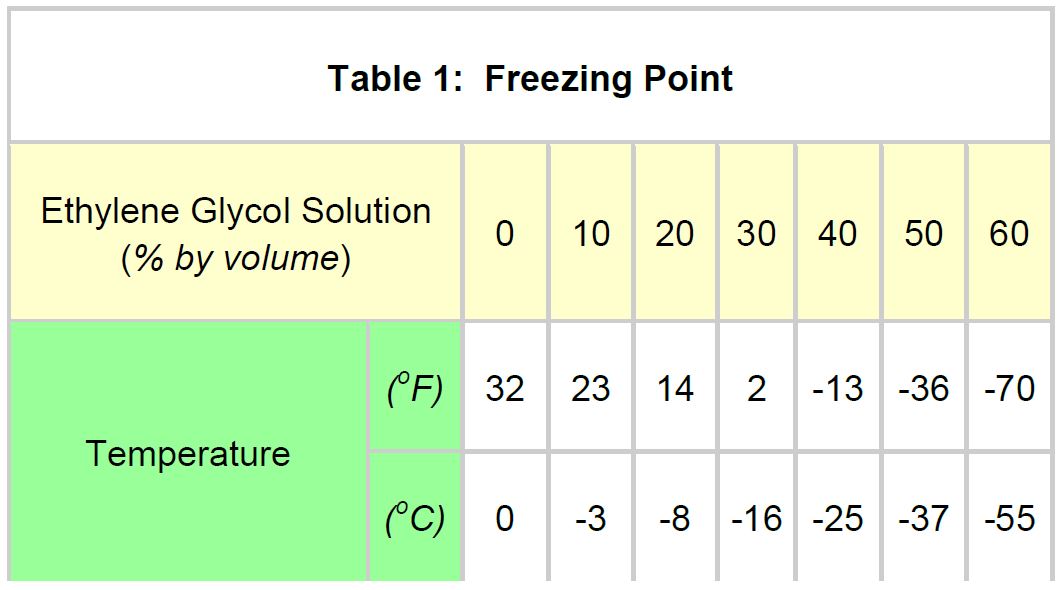Seakeeper 2 Installation Manual (90488-4); S/N 2-232-1564 to Current
4.5 Adding Coolant
- The Seakeeper 2 cooling system is filled to proper level when shipped. If level has dropped, check for evidence of leaks at all connections before adding fluid as described below. If coolant is at the correct level, skip to Step 5.
- The minimum and maximum glycol fill levels are shown in Figure 27.

- Mix 50% ethylene glycol with 50% distilled water in a clean container. Refer to Table 1 or glycol manufacturer’s literature for freezing points.
- It is required that ethylene glycol with corrosion inhibitors be used. Most commercially available glycol has these additives standard.

- Remove reservoir cap and pour mixture in until level reaches top face of the reservoir enclosure, as shown in Figure 27.
- Filling reservoir above this level will not cause any damage but coolant may be expelled from the vented cap due to normal thermal expansion of coolant.
- Once the Seakeeper 2 and DC seawater pump are connected to 12 VDC power:
- Check the Seakeeper Display interface for any ALARMS.
- Cycle the Seakeeper 2 power, and press the POWER ON button.
- The flywheel will start to spin, and the glycol pump will start.
- Recheck glycol level with fluid circulating in coolant circuit to ensure the correct fill level is maintained.
- After several minutes of running, press POWER OFF button.
- The cooling system is self-purging. If small amounts of air are in the system, they should be dislodged during the first sea trial. Recheck level after sea trial and add fluid if required.
NOTE: It is not uncommon to see some air in the coolant system. It is normal and will not affect operation.